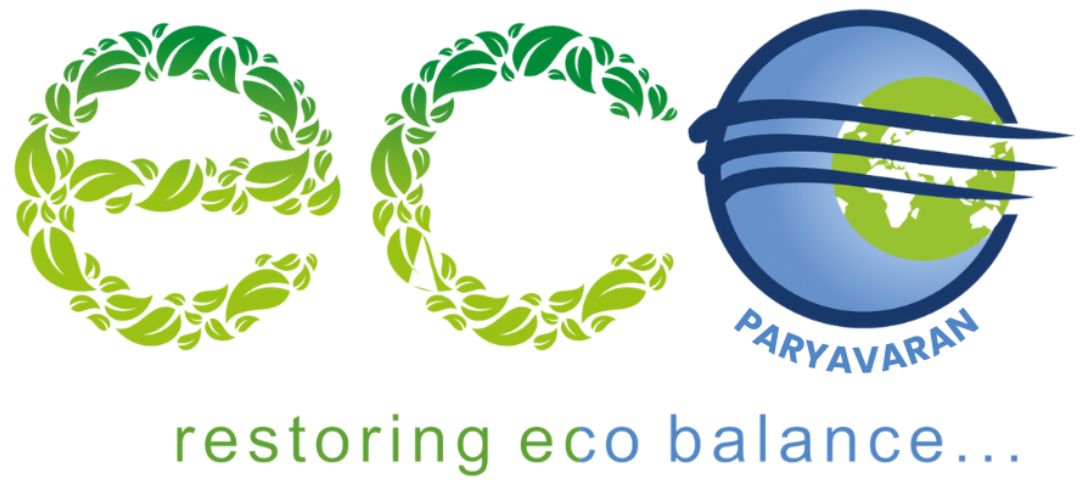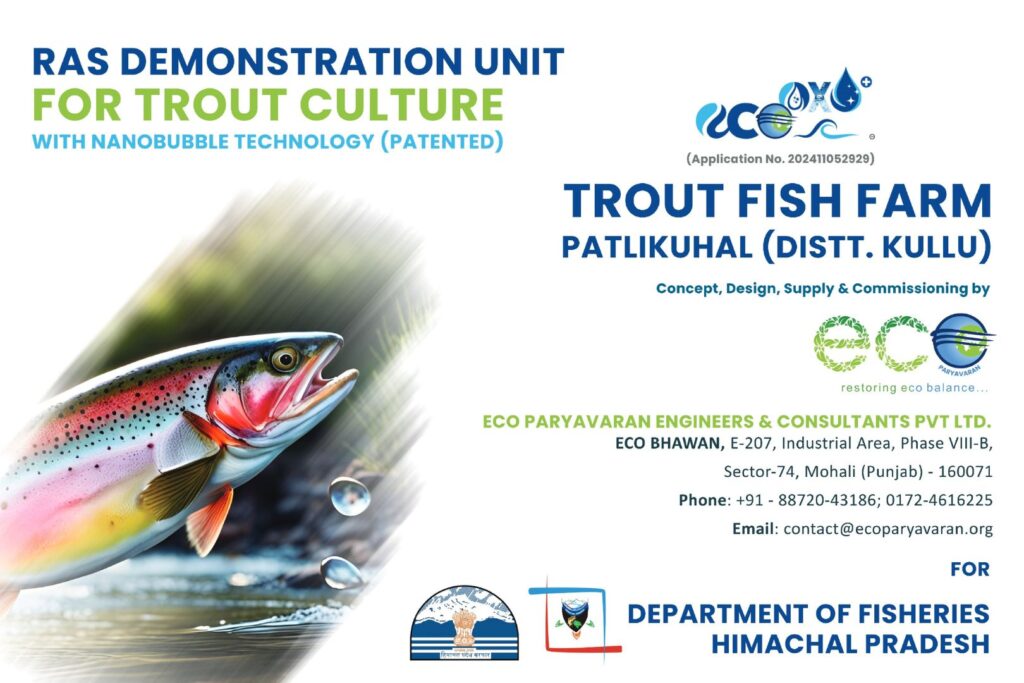EcoOxo⁺™: Transformative Water Treatment Solutions
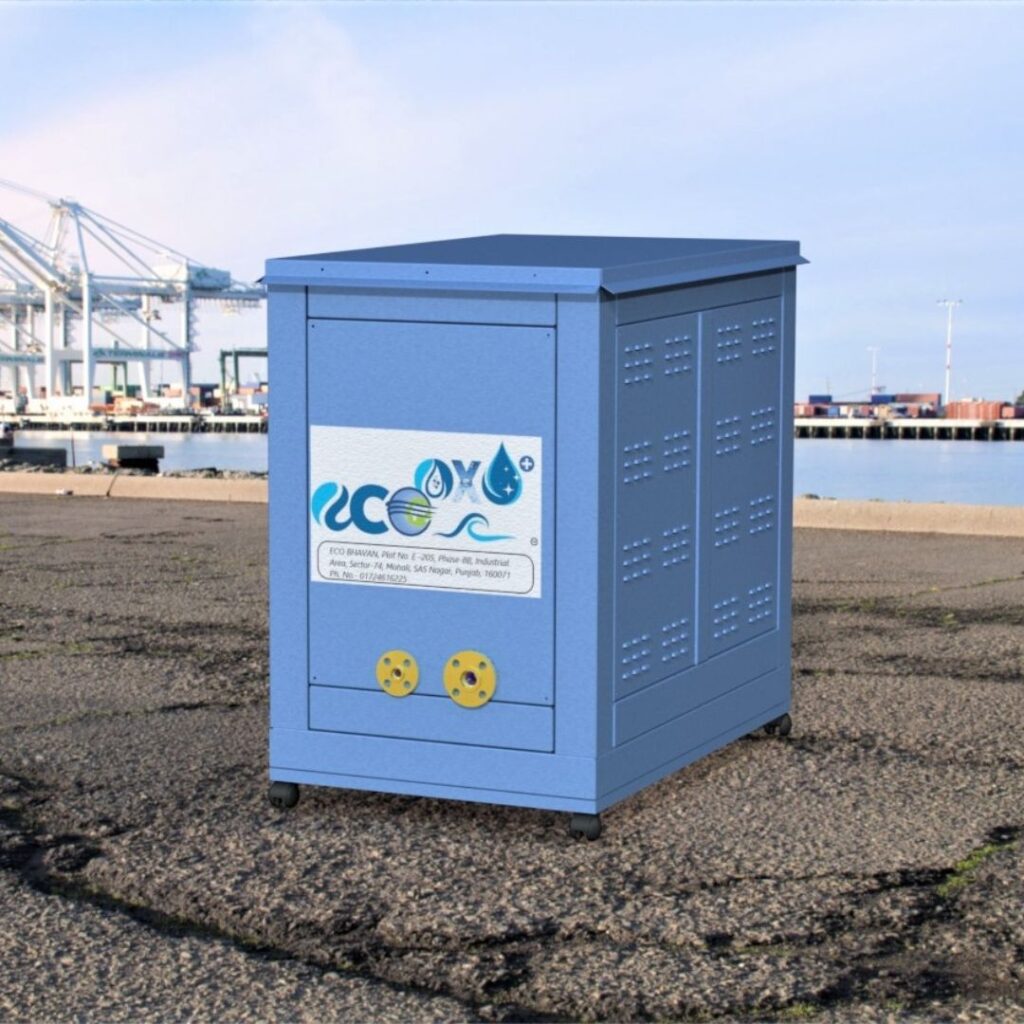
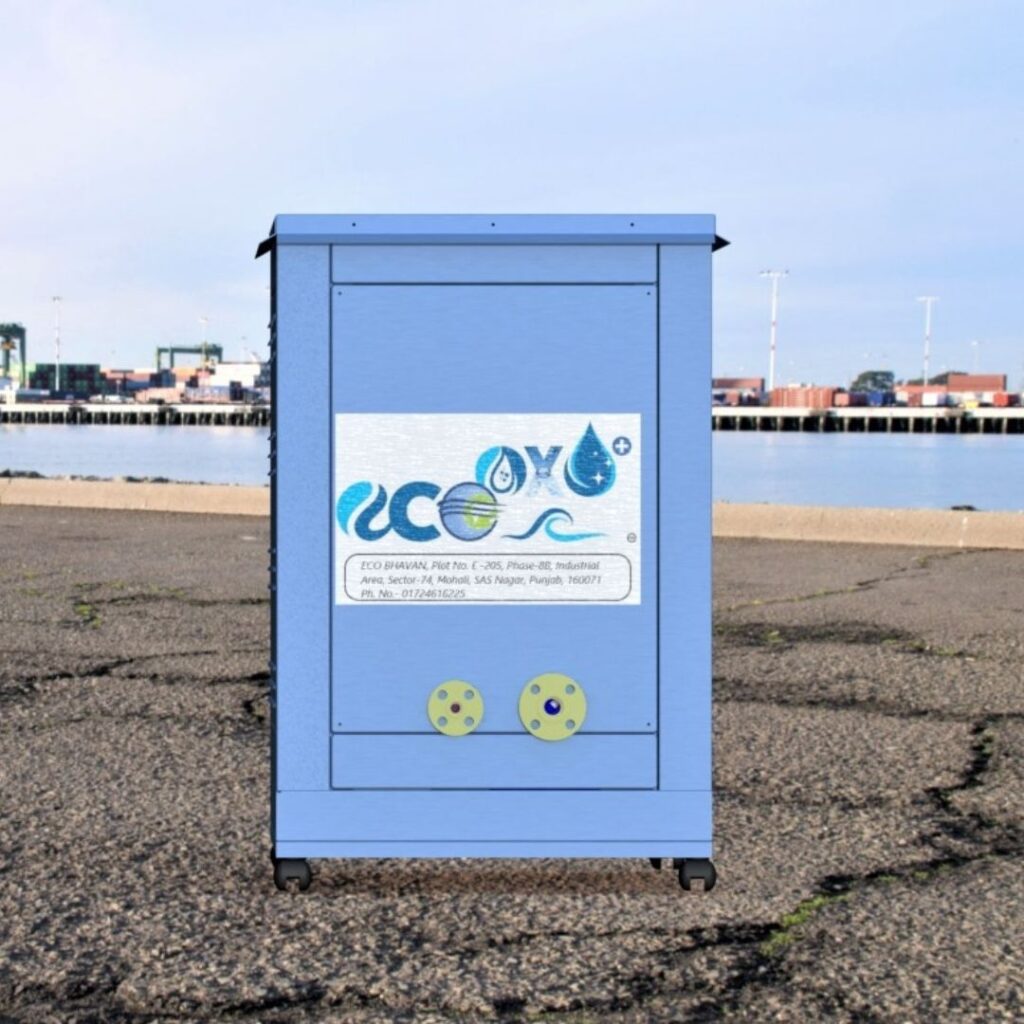
Why EcoOxo⁺™ by Eco Paryavaran is the Premiere Choice for Water Treatment
Eco Paryavaran stands as India’s leading force in sustainable water treatment, offering holistic, high-impact solutions backed by over two decades of expertise. Under the guidance of Dr. Sandeep Garg, our innovative team redefines water quality with EcoOxo⁺™ — our pioneering Reactive Fusion Nanobubble Technology. EcoOxo⁺™ goes beyond traditional treatment, delivering a chemical-free, high-efficiency solution that adapts seamlessly across industries, from pond rejuvenation to municipal wastewater management.
Certified by the Department of Science & Technology, MoEF, PPCB, and other national bodies, Eco Paryavaran is synonymous with sustainability and quality. Our extensive network of experts and partnerships means we provide not just solutions, but a complete ecosystem of support for every environmental need.
Eco Paryavaran — where expertise, innovation, and our advanced EcoOxo⁺™ technology set new standards in environmental responsibility.

Revolutionary Technology for Sustainable Water Management
The essence of EcoOxo⁺™ is its advanced reactive fusion nanobubble technology, which harnesses ultra-fine oxygen-rich bubbles to accelerate water treatment processes naturally. By creating zones of high oxidative power, EcoOxo⁺™ effectively eliminates pollutants, pathogens, and contaminants, offering a clean, chemical-free alternative to traditional treatment methods.

Key Benefits of EcoOxo⁺™ Fusion Technology:

1. Enhanced Efficiency:
Nanobubbles increase the efficiency of wastewater treatment processes, reducing energy consumption and operational costs.

2. Chemical-Free Treatment:
EcoOxo⁺™
eliminates the need for harsh chemicals, promoting environmentally friendly practices.

3. Improved Water Quality:
Nanobubble technology significantly improves water quality, making it suitable for reuse and reducing environmental impact.
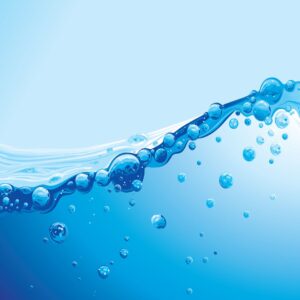
4. Indigenous Nanobubbles Technology in Water Purification:
Nano-sized bubble (gas) exists in water for a long time without degassing, and dissolved gas is maintained high for longer.
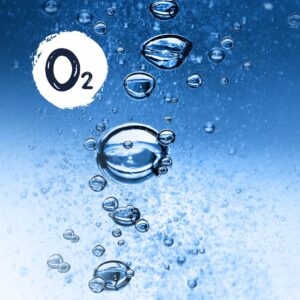
5. Enhanced Dissolved Oxygen (DO) Levels:
Nanobubbles increase dissolved oxygen in water, providing better conditions for aquatic life and enhancing the efficiency of biological treatment processes..

6. Pathogen Removal:
Nanobubbles assist in the oxidation of pathogens and harmful microorganisms, promoting cleaner and safer water for reuse and discharge.

7. Faster Processing Time:
By improving the efficiency of oxidation and dissolved oxygen delivery, nanobubbles can accelerate the treatment process, reducing the time required for complete treatment cycles.

8. Improved Nutrient Absorption in Agriculture:
Nanobubbles help in better nutrient absorption by plants, leading to improved crop yields and healthier growth, especially in hydroponics and aquaculture.
Tailored Solutions for Diverse Sectors
EcoOxo⁺™ adapts to meet the unique challenges of various industries, from food processing and agriculture to municipal wastewater management. Here’s how our technology drives sustainable practices in these sectors:
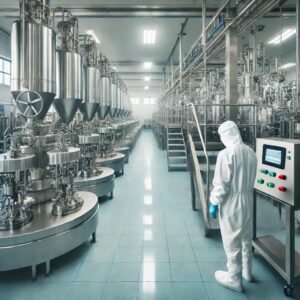
Food Processing Industry:
EcoOxo⁺™ Nanobubble technology ensures better water quality control in the food processing industry by reducing contamination risks, improving hygiene, and meeting regulatory standards. It promotes water reuse and supports clean production practices.
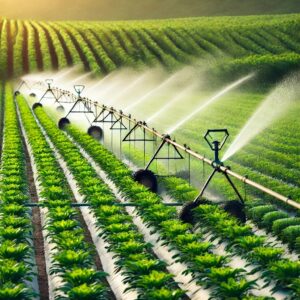
Agriculture:
The technology improves water quality for irrigation, enhances crop yields, and promotes sustainable farming practices.
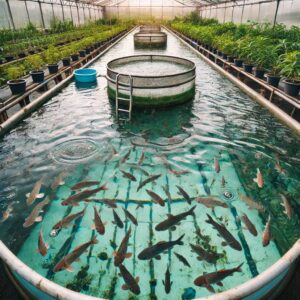
Aquaculture:
EcoOxo⁺™ Nanobubbles enhance dissolved oxygen levels in fish farms, leading to healthier fish and faster growth. This technology optimizes the water environment, reduces the need for antibiotics, and minimizes fish mortality, making aquaculture more sustainable and productive.

Effluent Treatment Plants (ETP):
Nanobubble technology significantly enhances the efficiency of Effluent Treatment Plants by improving the oxygenation process, which accelerates biological treatment and oxidation of pollutants. It reduces BOD, COD, and other contaminants.
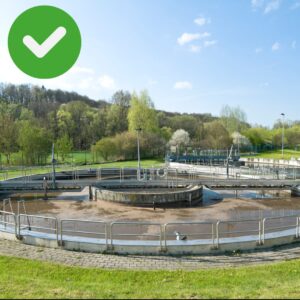
Municipal Wastewater Treatment:
EcoOxo⁺™ Nanobubble technology is highly effective in enhancing the biological treatment of municipal wastewater by increasing dissolved oxygen levels. It helps in reducing BOD, COD, and pathogenic bacteria.

Pond Rejuvenation:
EcoOxo⁺™ Nanobubble technology plays a crucial role in the restoration and rejuvenation of ponds by increasing dissolved oxygen levels and facilitating the breakdown of organic matter. It helps reduce algae growth, control foul odors, and restore the ecological balance, making ponds cleaner, healthier, and suitable for aquatic life.
Case Studies: Explore Proven Success with EcoOxo⁺™
1. Case Study: Pond Rejuvenation
Introduction: Many ponds in India suffer from poor water quality due to eutrophication, algae blooms, and low dissolved oxygen levels, making them unsuitable for aquatic life. EcoOxo⁺™ was introduced in two ponds in Haryana for rejuvenation and water quality improvement.
Objective: To restore the ecological balance of ponds by enhancing water clarity, increasing dissolved oxygen levels, and reducing algae blooms through the use of EcoOxo+ nanobubble technology.
Method: Two ponds, located in Khera and Kanheri, Haryana, were treated using the EcoOxo⁺™ system. The volumes of the ponds were 22,900 KL and 29,343 KL, respectively. Nanobubbles were introduced to increase oxygen levels and oxidize organic matter.
Results:
EcoOxo⁺™ had a transformative effect on the ponds:
- Water clarity improved significantly, promoting a healthier environment for aquatic life.
- Dissolved oxygen levels increased, reducing the likelihood of fish kills.
- Algae blooms were minimized, restoring the aesthetic and ecological balance of the ponds.
- Fish health improved due to optimized oxygen levels.
Conclusion: The EcoOxo⁺™ system successfully rejuvenated the ponds by improving water clarity, reducing algae blooms, and enhancing dissolved oxygen levels. This case study demonstrates how nanobubble technology can play a key role in environmental restoration projects.
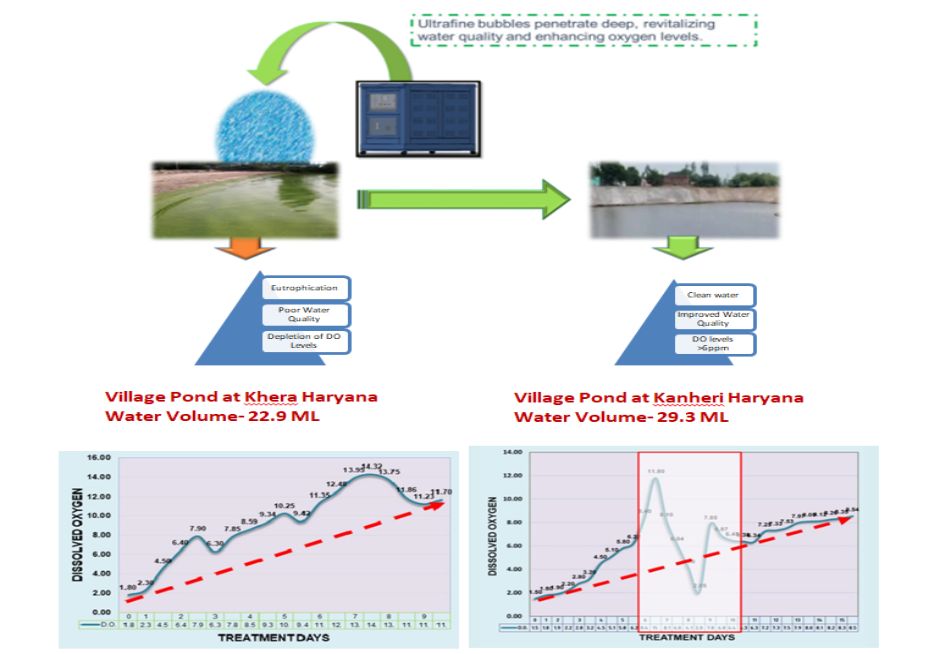
2. Case Study: Surfactant Degradation in Wastewater
Introduction: Surfactants are among the most challenging pollutants to degrade in wastewater due to their chemical composition. EcoOxo⁺™ technology was applied to address this issue in wastewater contaminated with sodium dodecyl benzene sulfonate (SDBS), a commonly used surfactant.
Objective: To efficiently degrade surfactants in wastewater while minimizing energy consumption and improving sustainability.
Method: Nanobubbles generated by the EcoOxo⁺™ system were introduced into SDBS-contaminated water. This process was compared to a control group without nanobubbles. The experiment was conducted for 24 hours to observe differences in surfactant breakdown and oxygen transfer efficiency.
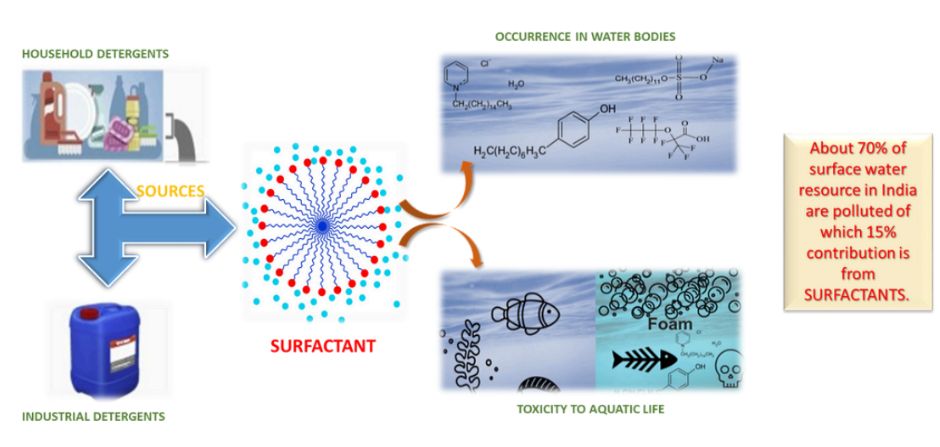
Results
EcoOxo⁺™ technology facilitated increased mass transfer of oxygen, resulting in a prolonged contact time with pollutants. This enhanced the degradation of the surfactant, while reducing the energy required for treatment. The process also contributed to a more sustainable wastewater treatment solution.
Conclusion: EcoOxo⁺™ technology proved to be highly effective in degrading surfactants, offering a sustainable solution for surfactant-laden wastewater. The increased oxygenation reduced energy consumption and operational costs, making the process more environmentally friendly.
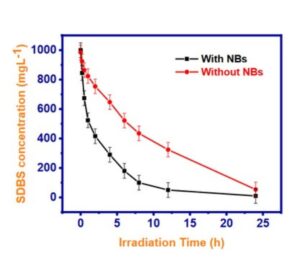
EcoOxo+ was used to introduce nanobubbles in the contaminated water and experiment without nanobubbles served as control group. Each experiment was conducted for 24 hours.
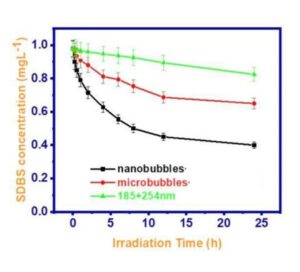
Nanobubble, microbubble, and macrobubble treatments were applied to a controlled volume of SDBS-contaminated water.
3. Case Study: 500 KLD Sewage Treatment Plant
Introduction: A sewage treatment plant (STP) with a capacity of 500 KLD was experiencing high energy consumption due to the blower system used for aeration. EcoOxo+ technology was introduced to enhance dissolved oxygen levels and reduce energy use.
Objective: To compare the operational efficiency of the STP with EcoOxo+ nanobubbles against traditional blower-based aeration and evaluate potential savings in power and costs.
Method: Water quality parameters were compared between two Sequential Batch Reactor (SBR) tanks: one using EcoOxo+ technology and the other using blowers. Dissolved oxygen (DO) levels, power consumption, and operational costs were tracked over time.
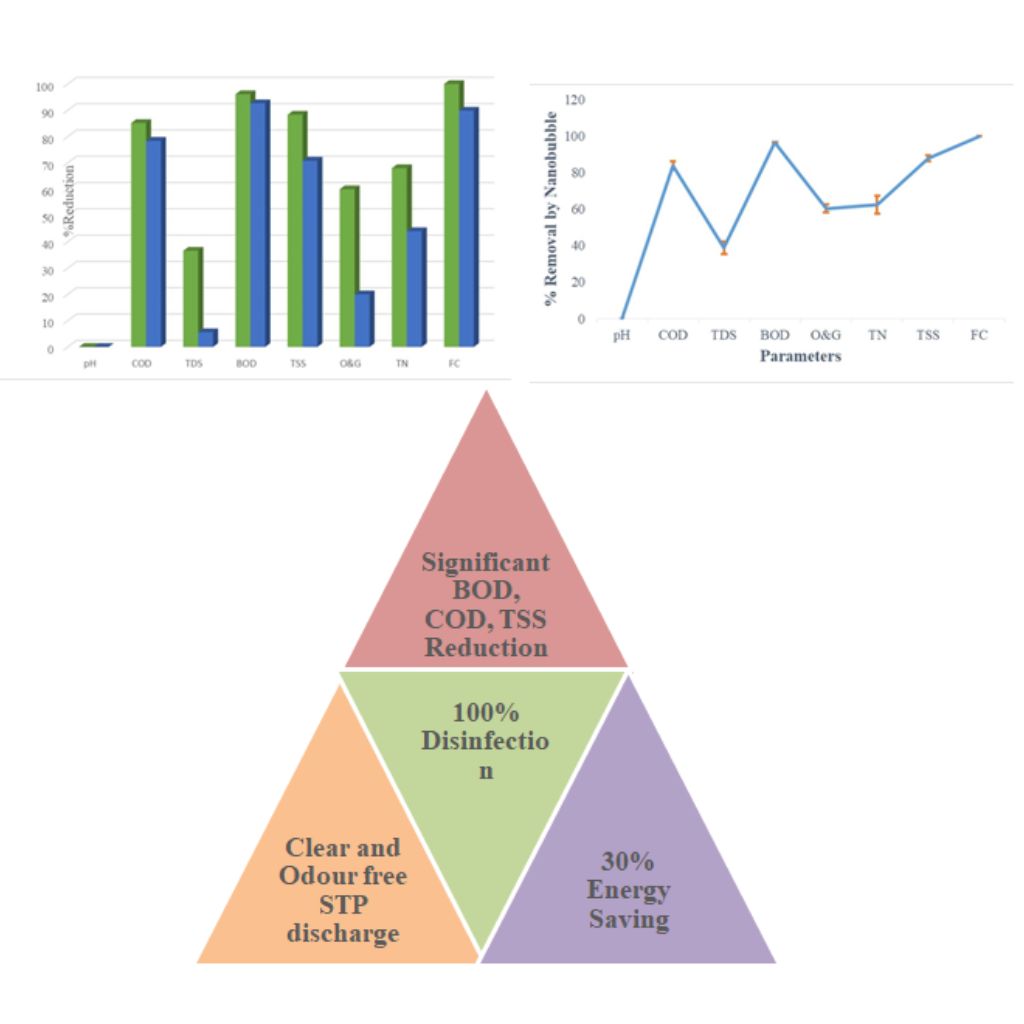
Conclusion: The EcoOxo+ system improved the efficiency of the sewage treatment plant, leading to reduced energy consumption and significant cost savings. The increase in dissolved oxygen levels also enhanced the overall treatment process, ensuring better water quality post-treatment.
